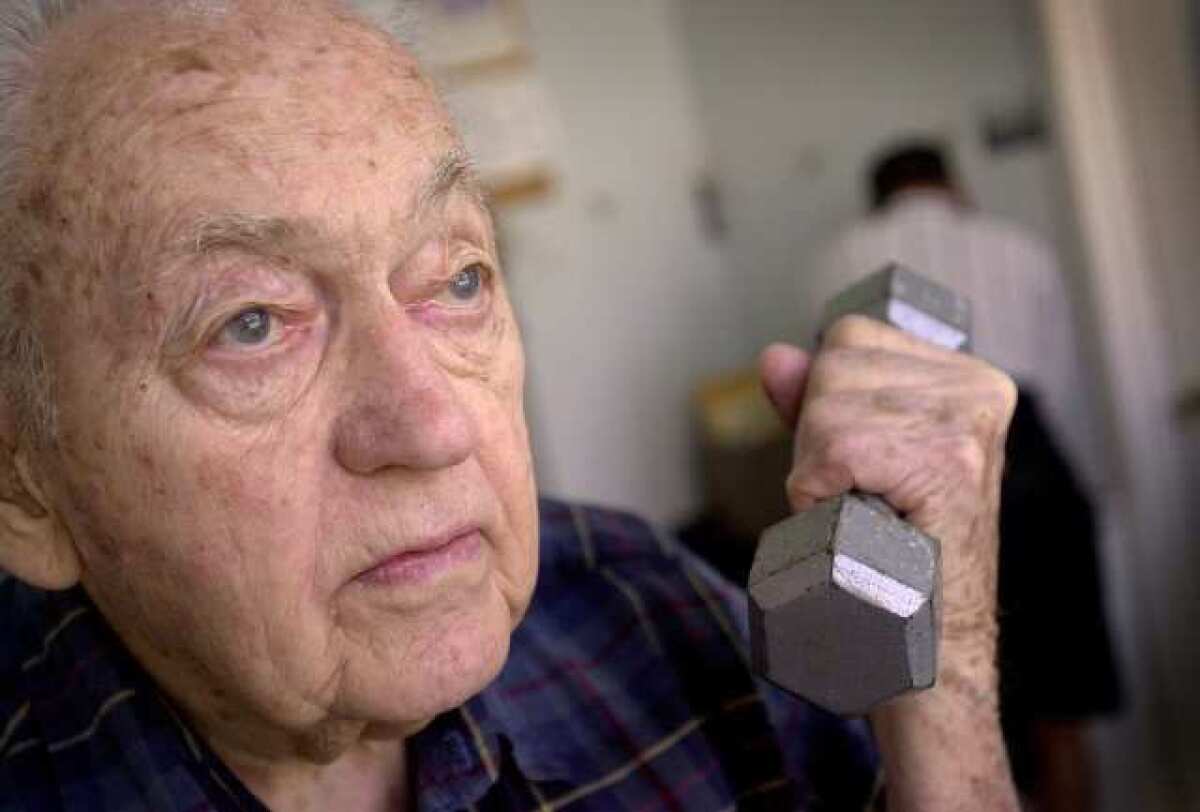Optical illusion dampens arthritis pain

Seeing the movements of a healthy hand mirroring one’s own movements plays a welcome trick on the brains of arthritis sufferers, a new study shows: It reduces the perception of pain. The observation, reported this week at the Society for Neuroscience’s annual conference, could offer a safe, inexpensive means of dampening chronic pain by enlisting the brain’s power of suggestion.
The small arthritis study, which tested just eight subjects, comes from the lab of UC San Diego neuroscientist V.S. Ramachandran -- who first used mirror-based trickery to treat phantom-limb pain in patients who have had an amputation. In those studies, pain perceived to come from an absent limb resolved when subjects saw what appeared to be their own missing limb moving smoothly and performing tasks without pain.
In the study presented by UCSD neuroscientist Laura Case this week in Washington, eight subjects suffering from severe osteo- or rheumatoid arthritis sat in front of a mirrored box and extended one of their hands. A researcher extended his hand over the subject’s hand and asked the subject to move her hand slowly. The researcher, meanwhile, mimicked the subject’s hand movement.
The subject, seeing only the researcher’s hand in the mirror, saw a young, healthy hand performing movements fluidly and without pain or difficulty. And when asked about their hands’ level of pain after the exercise, subjects rated their pain, on average, 1.5 points lower, on a scale of 1 to 10, than it had been at the outset. Some had a 3-point reduction in pain, said Case.
And there was more than one way to trick the brain’s perception of pain, the researchers found. They also saw subjects rate their pain as lower when they held objects in their hands that appeared smaller and lighter than they actually were.
Case said it’s not clear what trickery, exactly, made subjects feel less pain; it may have been the sight of “their” hand (actually, the researcher’s) as a young, healthy hand with no arthritic deformities that made them feel better. It might have the appearance of the effortless movement that suggested a lack of pain. Then again, it may have been the exercise, which usually loosen’s pain’s grip, said Case.
Case and her colleagues are currently testing the mirror-based treatment on a larger population of patients with arthritic and other chronic pain. With roughly 50 million Americans suffering the pain and stiffness of arthritis, therapy that enlists the brain’s willingness to see and feel a sick body as healthy -- even if it is an illusion -- could be an important treatment. Unlike non-steroidal anti-inflammatory drugs (NSAIDs), which come with a long list of short- and long-term risks, mirror therapy is non-invasive, safe and relatively cheap. All it takes is a mirror, a healthy body stand-in and a brain.




